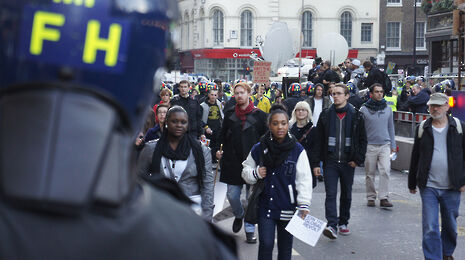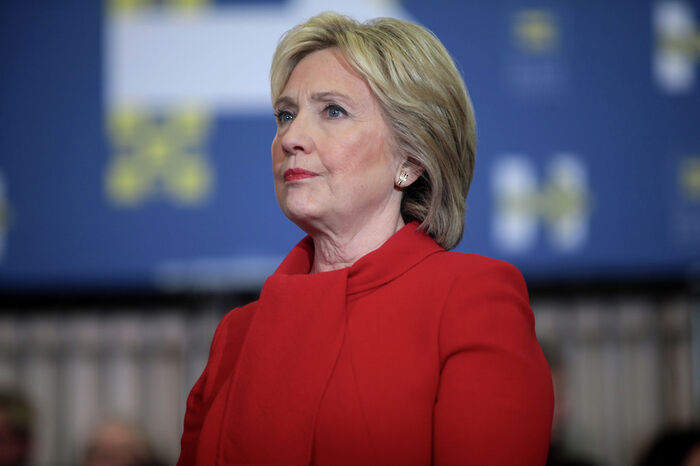Student influence on politics is greater than you think
In her ninth and final column, Anna Cardoso reflects on the relationship between the media and the young, casting the youth of study in an optimistic light

The media is simply with us nowadays; every major paper on both sides of the Atlantic seems fixated on students. Whether it’s our safe spaces, our stamping out of free speech, our crazed protests, or our trigger warnings that threaten to turn the nation’s next generation of leaders into snowflakes – campus life is always in the news. What’s going on?
It seems student politics represents one of the sides in the “culture wars” raging in both America and the UK. Both Brexit and the election of Donald Trump empowered previously dormant fringes of the right-wing. It seemed that candidates and figures in mainstream politics were finally speaking out on behalf of their interests, unconstrained by ‘political correctness’ (or common decency).
“When older journalists and politicians observe the debate about safe spaces or trigger warnings, they see the growing ‘weakness’ of our society”
Where the hard-right had emerged, the left has risen to meet it. The left has safe spaces while the right has filter-free speech (that frequently spills into racism or sexism). The left has the Antifa while the right has (frequently ethno-) nationalist agitators. Student politics seems to provide an enemy for the diametrically opposite alt-right. There is no denying that the political left dominates our campus, alongside almost every campus in the country.
Campus politics has always been left-leaning and political activism has always played a role in university life. Just as Harvard students occupied the student centre in protest of continued racism at the school, students in the 1960s sat in university buildings to protest against the war in Vietnam. The 1960s are heralded as the zenith of student activism; there are many books devoted to these protests’ impact on American history.
But in the 1950s there were anti-McCarthy and anti-nuclear protests. In the 1980s it was divestment from South Africa and racism that prompted a student at Harvard to comment that “The U.S. is experiencing an unprecedented rise in student activism.” In the 1990s, newspapers decried “the university of the 1990s” for being “besieged by students who have replaced dispassionate and objective pursuit of knowledge with political correctness and identity politics.” Sounds familiar, doesn’t it?
The media has not radically changed its coverage of campus life in seven decades. ‘Juvenoia’ – the fear or hostility directed by an older generation toward a younger one, or toward youth culture in general – helps to explain why the coverage has stayed so consistent over such a long period of time. When older journalists and politicians observe the debate about safe spaces or trigger warnings, they see the growing “weakness” of our society. Just like journalists in the 1960s saw the disintegration of the moral fabric of society in the anti-war protests. Or how academics in the 1990s saw students as being part of a “broadside attack on modern institutions” (in the words of Peter Sacks) for protesting racism on campus.
Whilst some students have gone too far in their demands, every movement has radicals, and journalists ought to consider whether their fears are as rational as they may seem. Western society has yet to come crashing down at the hands of university students.
However, it’s possible we are living in a moment in campus political history that is fundamentally different than the decades preceding us. For the first time, it seems that student political power has hoisted two formerly-fringe figures in politics into positions of authority. Jeremy Corbyn is the leader of the Labour Party; if you had told Tony Blair that Corbyn was destined to lead his party a decade ago, he would have laughed you out of Downing Street. Bernie Sanders, a man who was not even affiliated with the Democratic Party before he ran for president, almost took the nomination from Hillary Clinton. Both these men were long considered too left-wing and too extreme to be major forces in their respective political parties.
Youth mobilization has helped to change that. Sanders won 84% of the youth vote at the Iowa caucus; Clinton only beat him by 0.3%. Analysis by Ipsos MORI suggested that Corbyn’s unexpectedly strong performance in the recent general election was caused by the highest youth turnout since 1992. I don’t need to tell anyone who was here last year that Cambridge was fiercely supporting Labour in the 2017 general election.
The leftward shift of major political parties in the UK and US means that for the first time in decades, campus political leanings are reflected in mainstream politics. Naturally, Cambridge is not homogenously Corbynite; our university has members from every part of the political spectrum. However, the dominant discourse on campus is undeniably left-leaning. Perhaps some of the media hysteria that surrounds campus politics stems from the fact that the far-left, and by extension campus politics, is powerful again (though not in power) – and this inspires fear amongst the ranks of right-wing media outlets. Or maybe they are just making the mistakes of their predecessors and indulging in the hysterical ‘juvenoia’. Either way, history tells us that the kids are going to be alright
 News / SU reluctantly registers controversial women’s soc18 December 2025
News / SU reluctantly registers controversial women’s soc18 December 2025 News / Dons warn PM about Vet School closure16 December 2025
News / Dons warn PM about Vet School closure16 December 2025 Features / Should I stay or should I go? Cambridge students and alumni reflect on how their memories stay with them15 December 2025
Features / Should I stay or should I go? Cambridge students and alumni reflect on how their memories stay with them15 December 2025 News / Cambridge study finds students learn better with notes than AI13 December 2025
News / Cambridge study finds students learn better with notes than AI13 December 2025 News / Uni registers controversial new women’s society28 November 2025
News / Uni registers controversial new women’s society28 November 2025










